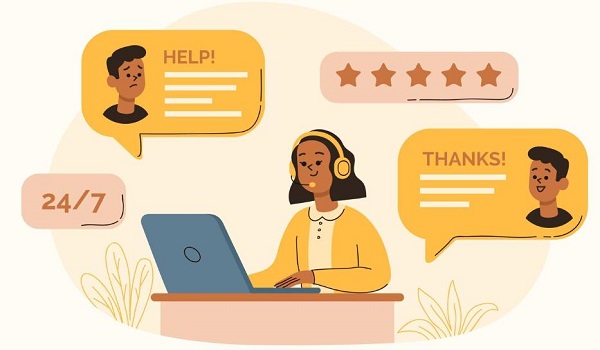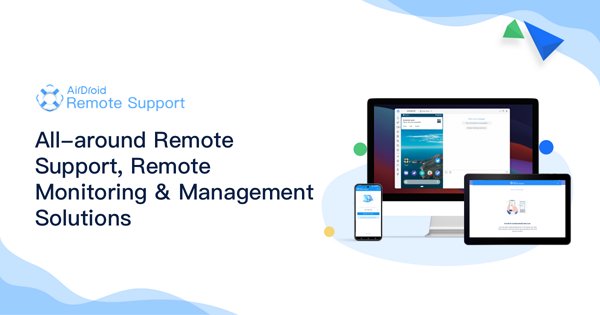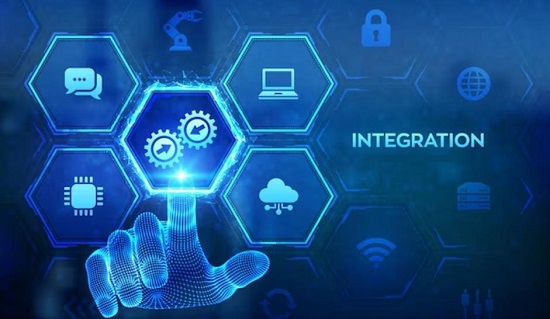15 Best Practices for Building an Excellent IT Help Desk
IT help desk is a service that supports customers with problems or questions related to a product or service. It can be a vital part of a business, as it can improve customer satisfaction, loyalty, and retention. However, not all help desks are created equal. Some help desks may need to be more efficient, responsive, or professional, which can frustrate customers and damage the business's reputation.
Therefore, it is important to build an excellent IT help desk to deliver high-quality customer support and meet their expectations. In this article, we will discuss what an IT help desk is and what the characteristics of a good IT help desk are. We will also share 15 best practices for building an excellent IT help desk that benefits businesses and customers.
What Is IT Help Desk and What Are the Characteristics of a Good Help Desk?
IT help desk is a service that supports customers with problems or questions related to a product or service. It can be accessed through various channels, such as phone, email, chat, web, or social media. IT help desk can provide different levels of support, such as basic troubleshooting, technical assistance, or customer service.
IT help desk can be internal or external. An internal help desk provides support to the employees or members of an organization, such as IT support or HR support. An external help desk provides support to the customers or clients of an organization, such as product support or service support.

Characteristics of a Good Help Desk
A good IT help desk should have the following characteristics:
Easy-to-Use Interface
A good IT help desk should have an easy-to-use interface that allows customers to submit, track, and manage their tickets quickly. The interface should also be user-friendly, intuitive, and responsive, providing customers with clear and consistent information.
Self-Service Options
A good IT help desk should provide self-service options, allowing customers to find answers to their problems or questions without contacting the help desk. Self-service options can include a knowledge base, a FAQ section, a forum, or a chatbot. Self-service options can reduce the help desk's workload and increase customer satisfaction and empowerment.
Automated Workflow
A suitable IT help desk should have an automated workflow that streamlines handling tickets. The workflow should include features such as ticket assignment, prioritization, escalation, notification, and closure. The workflow should also be customizable and flexible and allow the help desk to adapt to different scenarios and situations.

Multiple Communication Channels
A good IT help desk should provide multiple communication channels that allow customers to contact the help desk through their preferred method. The communication channels can include phone, email, chat, web, or social media. The communication channels should be integrated and synchronized, and the help desk should be allowed to switch between them seamlessly and efficiently.
Integration Function
A good IT help desk should have an integration function that allows the help desk to connect with other systems or tools that are relevant to the support process. The integration function can include CRM, ERP, billing, analytics, or other support software. The integration function can enhance the functionality and performance of the help desk and provide a holistic view of the customer and the support process.
15 Best Practices for Building an Excellent IT Help Desk
Here are 15 best practices for building an excellent IT help desk that can benefit both businesses and customers:
Establish a Customer-Centered Philosophy
A customer-centred philosophy is a mindset that puts the customer at the centre of everything the help desk does. It means that the IT help desk should understand the customer's needs, expectations, and feedback and use them to guide their decisions and actions. And it can help the help desk deliver high-quality support that meets or exceeds the customer's satisfaction.
Provide 24/7 Support
24/7 support is a service that supports customers around the clock, nevertheless of the time zone, location, or day of the week. It can help the help desk cater to the diverse and global customer base and respond to urgent and critical issues that may arise at any time. 24/7 support can also increase customer trust and loyalty, showing that the help desk is always available and reliable.

Choose the Right Ticketing System
A ticketing system is software that helps the IT help desk manage and track the tickets customers submit. It can help the help desk organize, categorize, and prioritize the tickets and assign them to the appropriate agents or teams. A ticketing system can help the help desk monitor and measure its performance and productivity and identify and resolve possible issues or bottlenecks. It should be easy to use, scalable, and secure and suit the help desk's needs and goals.
Provide Multiple Support Channels
As mentioned earlier, a good IT help desk should provide multiple support channels that allow customers to contact the help desk through their preferred method. However, more than giving various support channels is required. The IT help desk should also ensure that the support channels are consistent, coherent, and coordinated and that the customer experience is seamless and smooth across the different channels.
In addition to the traditional support channels, such as phone, email, chat, web, or social media, the help desk can leverage other support software to provide customers with more services and solutions. For example, AirDroid Remote Support is a remote support software that can troubleshoot problems directly by remotely accessing or controlling the customer's mobile device.

AirDroid Remote Support can help the IT help desk provide faster and more accurate support and reduce the need for physical visits or returns. It can initiate a remote session with a 9-digit connection code and assist efficiently with remote support features such as AR camera, tutorial gesture, live chat and more.
Use Automated Workflows
A good IT help desk should have an automated workflow that streamlines handling tickets. It should ensure that the workflows are aligned with the best practices and standards of the help desk and that they are updated and maintained regularly. It should also test and verify the workflows and ensure they work properly. The help desk should use the data and feedback to improve the workflows and eliminate the errors or glitches that may occur.
Provide Self-Service Portal
As mentioned earlier, a good IT help desk should provide self-service options that allow customers to find answers to their everyday problems or questions without contacting the help desk. The IT help desk should ensure that the self-service portal is accessible, user-friendly, and informative and provides accurate and relevant information to customers. It should update and maintain the self-service portal regularly and ensure that it reflects the latest changes or updates of the product or service.
Create and Update Knowledge Base
A knowledge base is a storage of information that answers frequently asked questions or common issues that customers may have related to the product or service. It can allow the help desk to share the knowledge and expertise of the help desk agents and standardize the support process. A knowledge base should be comprehensive, clear, and concise, covering critical and relevant topics and scenarios. And it should be updated and maintained regularly and reflect the latest product or service changes or updates.

Deploy Chatbot
A chatbot is a software that uses AI and natural language processing to simulate a human-like conversation with customers. It can help the IT help desk provide instant and automated customer support and handle simple and repetitive tasks or queries that do not require human intervention.
A chatbot should be smart, friendly, helpful, understand the customer's intent and context, and provide accurate and relevant responses. And it should be able to escalate complex or sensitive issues to human agents and to learn from the feedback and interactions to improve its performance and accuracy.
Set the SLA Policy
An SLA (Service Level Agreement) policy is a document that defines the expectations and obligations of the IT help desk and the customers and the metrics and standards that are used to measure and evaluate the quality and efficiency of the support service. It can help the help desk to establish a clear and mutual understanding with customers and to set realistic and achievable goals and targets.
An SLA policy should be specific, measurable, attainable, relevant, and timely. It should cover the critical aspects of the support service, such as response time, resolution time, availability, satisfaction, and quality.
Hire and Train the Right Employees
The employees are the most valuable asset of the help desk, as they are the ones who interact with customers and provide support to them. Therefore, it is crucial to hire and train the right employees with the skills, knowledge, and attitude required for the help desk role.
It should look for employees with excellent communication, problem-solving, and customer service skills and a passion and enthusiasm for the product or service. It should also provide regular and comprehensive training and equip employees with the tools and resources needed to perform their tasks effectively and efficiently.

Establish Effective Communication Channels
Communication is the key to success for any IT help desk, as it is the main way of interacting with customers and providing support to them. Therefore, it is essential to demonstrate effective communication channels that allow the help desk to communicate with customers and each other in a timely and professional manner.
The IT help desk should use the appropriate communication channel for the proper situation and ensure that the communication is consistent, coherent, and coordinated across the different channels.
Collect Customer Feedback and Improve
Customer feedback is the most useful source of information for the IT help desk, as it can provide insights into the customer's needs, expectations, satisfaction, and the strengths and weaknesses of the help desk. Therefore, collecting and using customer feedback to improve the help desk is essential.
The IT help desk should solicit customer feedback through various methods, such as surveys, ratings, reviews, testimonials, or comments. It should analyze and evaluate the customer feedback and determine the areas of improvement and the opportunities for enhancement.
Leverage Third-Party Integration
Third-party integration is connecting the IT help desk with other systems or tools relevant to the support process, such as CRM, ERP, billing, analytics, or other support software. It can help the help desk enhance its functionality and performance and provide a holistic view of the customer and the support process. It can also help the help desk automate and streamline the support process and reduce the errors or redundancies that may occur.

Regular Analysis within the Organization
Regular analysis within the organization is the process of monitoring and estimating the progress and performance of the IT help desk and identifying and resolving the issues or gaps that may occur. It can help the help desk ensure that it meets the goals and targets set by the help desk and the organization and complies with the best practices and standards of the help desk and the organization.
Create a Good Working Environment for Employees
A good working environment for employees is a condition that provides a positive and supportive atmosphere for the employees to work in and that fosters a culture of collaboration and cooperation among the employees. It can help the help desk improve the morale and motivation of the employees and retain and attract the best talent for the help desk. It can also help the help desk improve the health and well-being of the employees and reduce the stress and burnout that may occur.
Benefits of the Help Desk for Businesses and Customers
The IT help desk can provide many benefits for both businesses and customers, such as:
For Businesses
- Increase customer satisfaction, loyalty, and retention
- Gain insights into customer needs, preferences, and feedback
- Improve product or service quality and innovation
- Reduce costs and increase revenue
- Enhance reputation and brand image
For Customers
- Receive timely and professional support
- Solve problems or issues quickly and easily
- Learn more about the product or service
- Feel valued and respected
- Enjoy a better customer experience
Final Thoughts
Establishing an excellent IT help desk is crucial for businesses aiming to improve customer satisfaction and loyalty. A customer-centred philosophy, 24/7 support, a well-chosen ticketing system, and diverse communication channels contribute to streamlined operations.
Of course, remote support with tools such as AirDroid Remote Support can further increase efficiency. It is much more straightforward and efficient than help desk software in solving problems.






Leave a Reply.